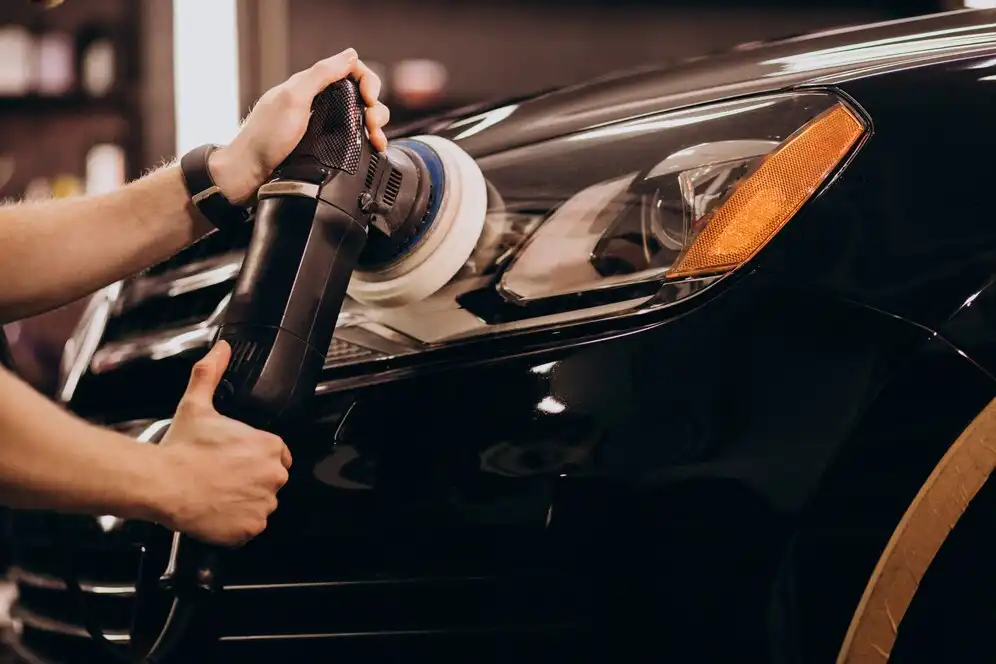Maintaining the pristine condition of your car not only enhances its aesthetic appeal but also preserves its value over time. Car detailing is a meticulous process that involves cleaning, restoring, and protecting both the exterior and interior of a vehicle. In this article, we’ll delve into the essence of car detailing, its importance, and the detailed steps involved in both exterior and interior detailing.

What is Car Detailing and Why is it Important?
Car detailing goes beyond a standard car wash. It involves a thorough cleaning and restoration process, aimed at restoring a vehicle to its original condition or even better. Detailing not only removes dirt, grime, and contaminants but also addresses imperfections such as scratches, swirl marks, and fading paint. By cleaning and protecting every inch of the vehicle, detailing helps in maintaining its appearance, enhancing longevity, and preserving its resale value.
Advertisement
Detailing Car Exterior
1. Steps and Time Required
The exterior detailing process typically includes washing, claying, polishing, and waxing or sealing. Depending on the condition of the vehicle and the level of detailing required, the entire process can take anywhere from a few hours to a full day.
- Washing: This initial step involves rinsing the car to remove loose dirt and debris, followed by a thorough hand wash using car wash shampoo. This step usually takes around 30-45 minutes.
- Claying: Clay bars are used to remove embedded contaminants from the paint surface, leaving it smooth and clean. Claying typically takes 1-2 hours, depending on the size of the vehicle and the extent of contamination.
- Polishing: Polishing is done to remove imperfections such as swirl marks, light scratches, and oxidation, restoring the paint’s shine and smoothness. This step can take 2-4 hours, depending on the condition of the paint.
- Waxing or Sealing: The final step involves applying a protective layer of wax or sealant to enhance gloss and provide long-lasting protection. Waxing or sealing typically takes 1-2 hours.
2. Tools and Gear Required
- Wash mitts or microfiber sponges ($5-$20)
- Car wash shampoo ($10-$30)
- Clay bar kit ($15-$50)
- Dual-action polisher or orbital buffer ($50-$300)
- Polishing pads ($5-$20 each)
- Car polish or compound ($10-$50)
- Wax or sealant ($20-$50)
3. Important Rules
- Work in shaded areas to prevent water spots and product drying too quickly.
- Use separate buckets for washing and rinsing to avoid reintroducing dirt to the paint.
- Always start with the least aggressive method/product when addressing imperfections in the paint.
- Follow the manufacturer’s instructions for each product and tool to achieve the best results.
Detailing Car Interior
1. Steps and Time Required
Interior detailing involves cleaning and restoring various surfaces inside the car, including upholstery, carpets, dashboard, and trim.
- Vacuuming: This initial step involves thoroughly vacuuming the interior to remove loose dirt, debris, and pet hair. Vacuuming can take 30 minutes to an hour.
- Cleaning Surfaces: Surfaces such as dashboard, door panels, and trim are cleaned using appropriate cleaners and brushes. This step typically takes 1-2 hours.
- Shampooing Upholstery and Carpets: Upholstery and carpets are shampooed to remove stains, odors, and embedded dirt. Shampooing can take 1-2 hours, depending on the size of the vehicle and the extent of cleaning required.
- Conditioning: Leather surfaces are conditioned to restore moisture and prevent cracking and fading. Conditioning typically takes 30-60 minutes.
2. Tools and Gear Required
- Vacuum cleaner ($50-$200)
- Interior brushes and detailing tools ($10-$30)
- All-purpose cleaner ($10-$20)
- Upholstery/carpet shampoo ($10-$30)
- Microfiber towels ($5-$20)
- Leather conditioner ($10-$30)
3. Important Rules
- Test cleaners and conditioners on a small, inconspicuous area before applying to the entire surface.
- Use soft brushes and microfiber towels to avoid scratching delicate surfaces.
- Allow sufficient drying time for carpets and upholstery before using the vehicle.
- Ventilate the interior during and after detailing to help dry surfaces and eliminate odors.
Frequently asked questions about car detailing
Can you use dish soap to wash your car?
No. Don’t do this. While it’s very good at removing food and grime from your dishes, it’s no good on your car. In fact, the same degreases eat away at any wax or sealant you have on the car, leaving your paintwork exposed to damage. Avoid the dish soap!
Can detailing your car too often damage the paintwork?
No. We’re not sure where this myth came from, but it’s certainly not true. In fact, the dirt and grime that builds up over the course of a week of driving is more damaging to your paintwork then cleaning it. This is provided you’re cleaning your car correctly, as incorrect methods can lead to paintwork damage such as swirl marks.
Should you use two buckets or one bucket washing your car?
90-percent of swirl marks are inflicted during the washing process. Using two buckets allows you to have one bucket with the shampoo solution in and a separate rinse bucket with a grit guard at the bottom. This means the mitt is clean when it goes into solution and then on to the car, this drastically reduces the chance of swirl marks in the contact washing process.
Is there actually a real difference between wax and polish?
A huge difference. A polish is an abrasive. Not an aggressive abrasive like a compound, but abrasive enough to clean and refine paintwork. It’s a preparation product, whereas a wax is a protectant. No true wax is abrasive, it’s just there as a sacrificial layer to protect your paint… along with all the hard work and preparation you’ve put in.
How often should I wax my car?
A good quality wax or sealant should last up to three months, but you shouldn’t wait that long to clean your car. Personally I’d recommend cleaning and waxing or sealing once a month, to build up a good barrier to the elements. After three or four applications you’ll hit a nice plateau of protection.
Car detailing is a meticulous process that requires time, effort, and the right tools and products. By following the steps outlined for both exterior and interior detailing, you can achieve professional-grade results and keep your car looking its best for years to come. Remember, attention to detail is key in the world of car detailing.
